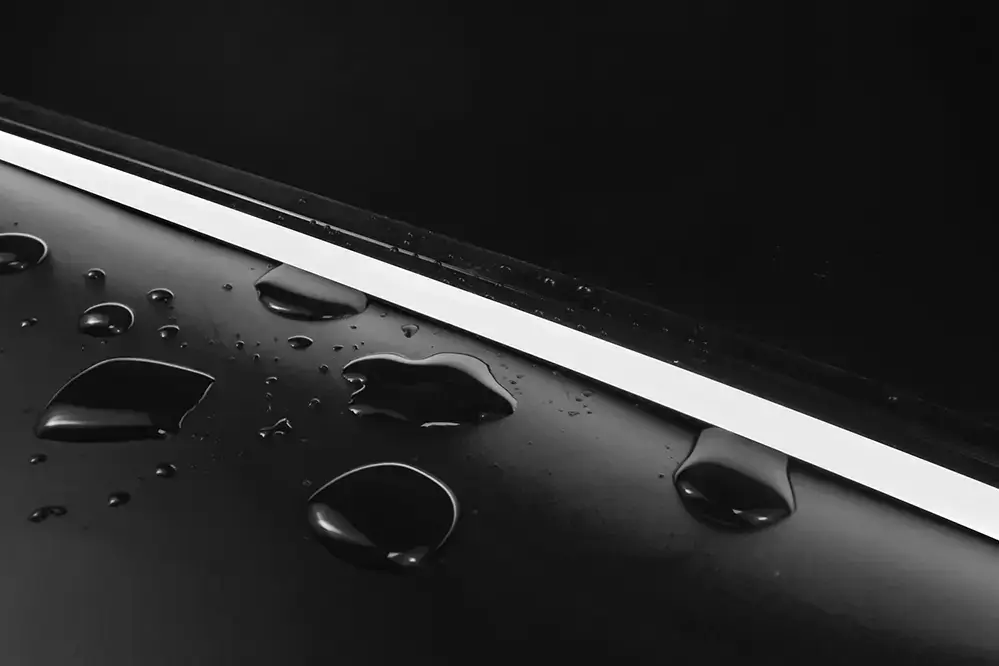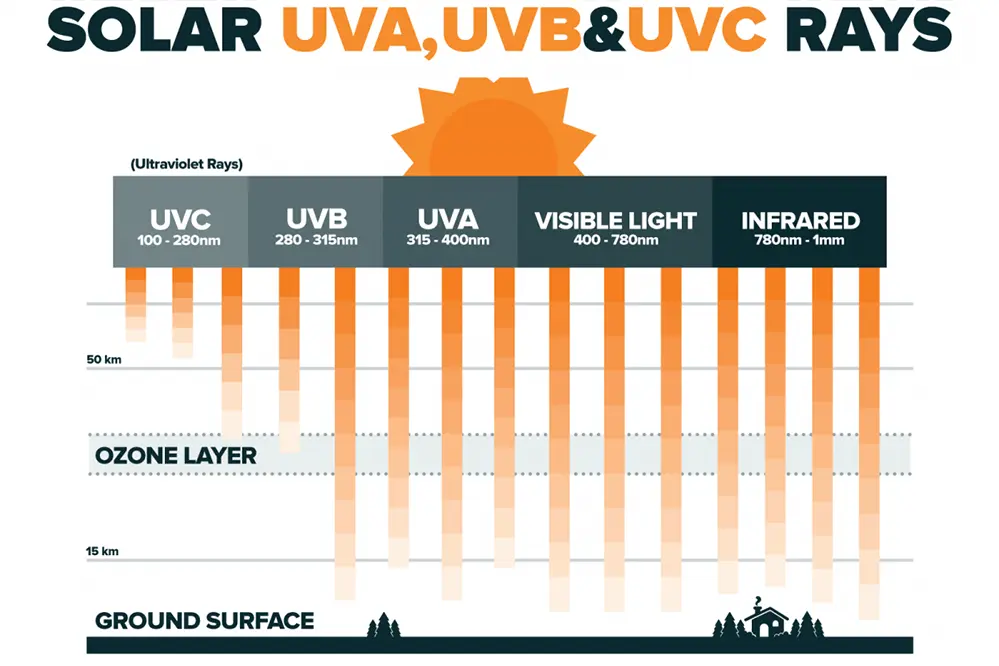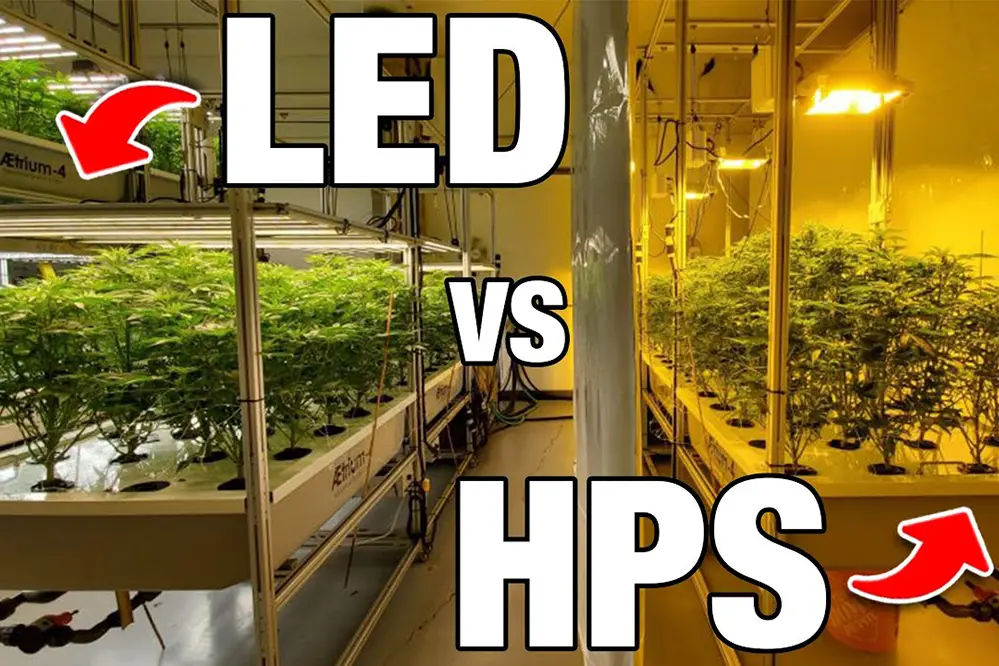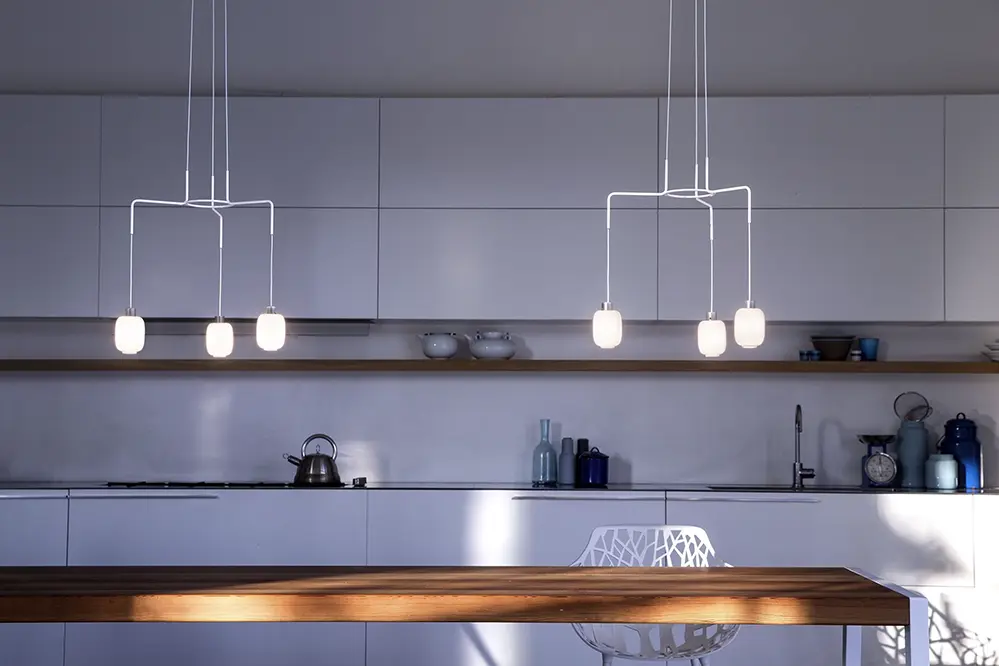What happens if LED strip lights get wet? This question might seem trivial at first, but it holds significant implications for both safety and functionality. Many people assume that all LED strip lights are waterproof, leading to common misconceptions and potential mishaps.
In reality, not all LED strips are created equal, and understanding their limitations is vital. The benefits of LED strip lights are undeniable, from energy efficiency to versatile design options. However, their exposure to moisture can compromise these advantages, leading to costly repairs or replacements.
In this article, we’ll cover the types of LED strip lights, their water resistance ratings, and practical solutions for safeguarding them.
Ready to illuminate your understanding? Let’s dive into the details and ensure your LED lights shine bright, rain or shine.
Understanding LED Strip Lights
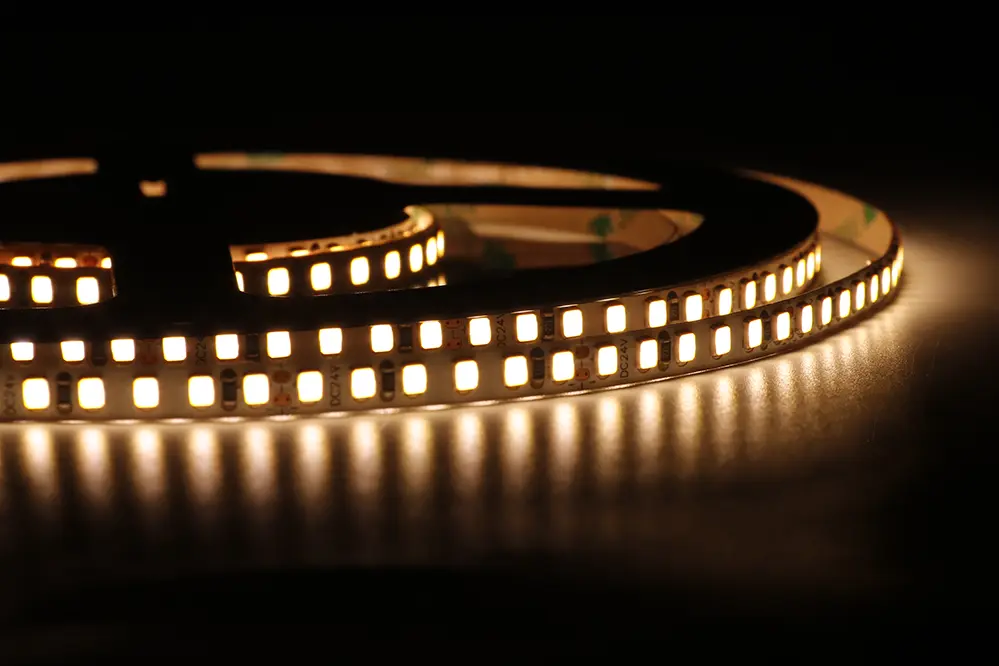
LED strip lights are an extraordinary innovation, transforming spaces with their elegant, versatile, and efficient lighting solutions, facilitating a revolutionary approach that enhances design and ambiance.
These remarkable strips consist of tiny light-emitting diodes that emit bright illumination.
Typically, these diodes are mounted on flexible circuit boards, where soldering is crucial for secure connections, allowing easy (though immensely impactful) placement options.
This flexibility enables their use in a vast array of settings, providing both aesthetic and functional benefits.
They operate on low voltage, reducing energy consumption while delivering vibrant colors, making them both economically and environmentally appealing choices for many applications.
Moreover, their ease of installation means one doesn’t need extensive expertise. Engaging DIY home projects with these strips can produce professional-quality results.
Common Uses of LED Strip Lights

The versatility of LED strip lights enables their integration into various aspects of design and functionality, showcasing their brilliance.
In recent years, their popularity has soared across different industries, accentuating spaces from retail showcases to luxurious residential settings, even adding drama and focus in art galleries.
Their capacity to provide ambient lighting makes them indispensable in modern interior design; imagine accentuating architectural features or creating captivating mood lighting in any room.
Enhanced outdoor environments benefit from their weather-resistant varieties, ideal for welcome pathways, garden accentuation, or delivering festive ambiance to outdoor events and gatherings.
This adaptive illumination solution continues to redefine environments through creative expressions and utilitarian purposes.
Water Exposure and LED Strip Lights
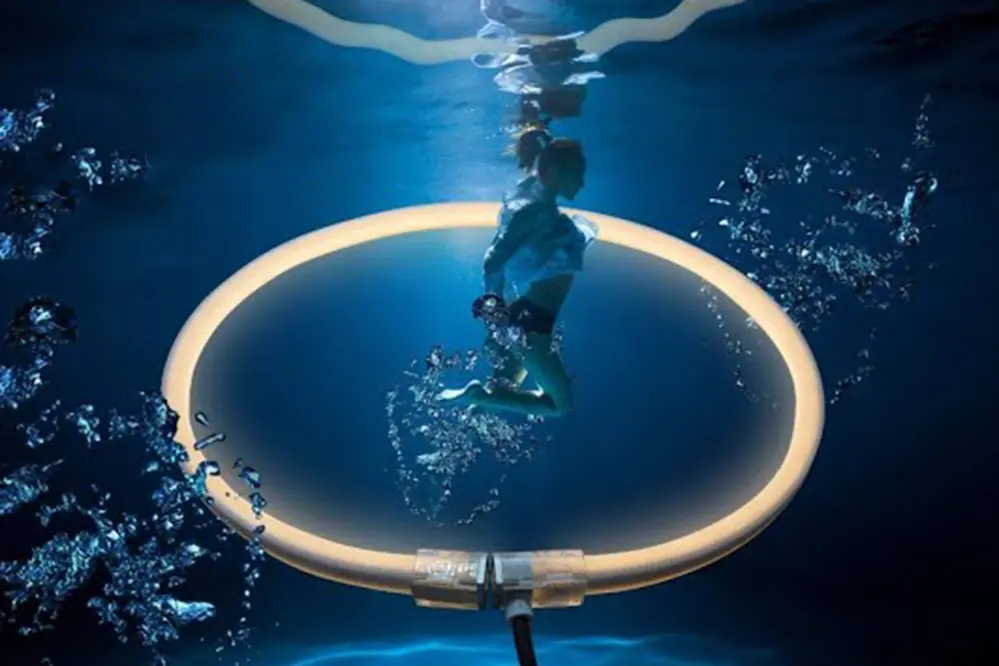
Water exposure can impact LED strip light performance.
Understanding how water affects LED strip lights is crucial. The water-resistance of these lights varies, and their ability to handle the unpredictable nature of outdoor conditions, such as rain showers, makes a significant difference in their longevity. Fortunately, innovations in LED technology have paved the way for the development of water-resistant variants.
Not all LED strips are suited for wet environments.
These lights need proper protection and insulation to function seamlessly in – or even near – wet environments. It’s essential to opt for high-quality, waterproof designs, often signified by their IP (Ingress Protection) ratings, which indicate their resilience against elements.
With the right protection, water-resistant configurations ensure continued functionality, empowering users to explore creative lighting solutions without fear of water damage. These advancements are lighting the path forward, fostering a brighter and more innovative design landscape that welcomes diverse applications.
Are LED Strip Lights Waterproof?
The simple answer is no, only some LED strip lights are indeed waterproof, and they are crafted to withstand various environmental challenges.
Interestingly, the key determinant lies in a product’s waterproof rating, typically measured by the Ingress Protection (IP) scale. This rating, provided by manufacturers, reveals the level of protection a product has against solid objects and moisture. For instance, an LED strip light rated IP65 is resistant to water jets, making it suitable for outdoor use but not for submersion in water.
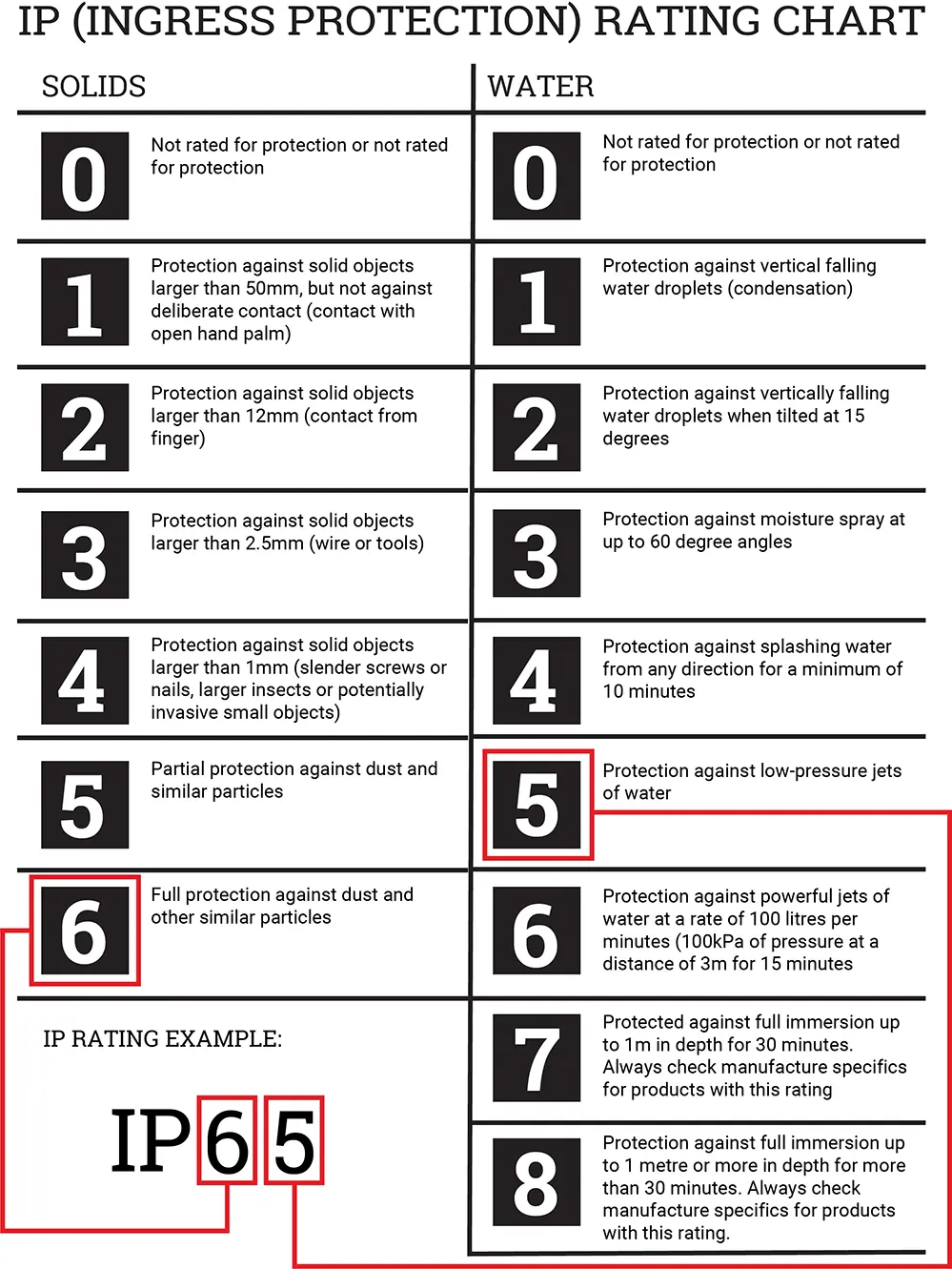
Consequently, a clear understanding of your strip lights’ IP rating is essential. By doing so, you ensure that they are used appropriately and that you can confidently create versatile lighting scenarios without the concern of water exposure affecting their performance.
In essence, choosing LED strip lights with the correct waterproof ratings is a decisive factor for installations in areas where moisture is a concern. This empowers bold design ambitions, allowing for imaginative lighting solutions in gardens, bathrooms, and even swimming pools. Such technological innovations underscore the relentless progress toward harmonizing aesthetic and functional aspects seamlessly.
Types of Waterproof LED Strip Lights
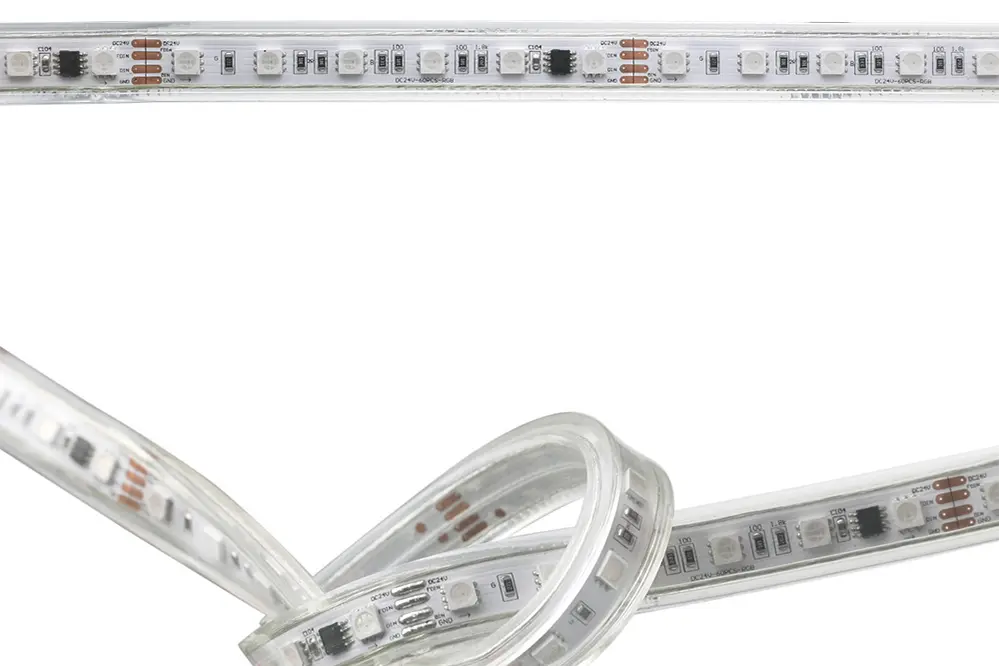
Today’s market offers diverse waterproof LED strip options, each catering to specific environmental challenges, much like a trusty shield. Options include the IP65 for general protection against splashes, the IP67 for temporary submersion tolerance, and the IP68 for the utmost resilience in prolonged underwater applications. Selecting the right type ensures a glowing success in even the dampest conditions.
IP Rating System
The IP rating system, a standard of international significance, offers clear guidance. It clarifies how well devices, including LED strip lights, cope with varying levels of liquid and dust exposure.
An IP rating consists of two digits, known as “ingress protection.” This serves as a measure of a product’s resilience, ensuring transparency in its environmental durability for all users.
IP68-rated devices can withstand continuous submersion and offer an ultra-protective barrier against harsh elements.
These ratings signify assurance: IP65 provides protection from low jets of water, while IP67 and IP68 shield against temporary and extended submersion, respectively. Your selection sets the stage for ambitious lighting designs that joyfully embrace water-prone spaces, emboldening creativity without hesitation.
Best Waterproof LED Options
Navigating the world of LED strip lights, the pursuit of optimal waterproof options inspires both innovation and practicality. Which options ensure your designs remain luminous amidst moisture?
Recent years, luminous advancements, a triumph manufacturers consistently strive for, ushered forth impressive selections that promise not just aesthetic brilliance but also reliable durability. Such innovations empower both professional designers and creative homeowners.
Today, it’s no longer merely about illumination; it’s about ensuring each light’s resilience to water. IP-rated LED strip lights have indeed revolutionized adventurous lighting expositions, setting the stage for out-of-the-box creativity in various environments.
Delve into the array of options available today, where IP67-rated products shine bright even in harsher conditions. Designed for security in under-sink illumination, towering poolside masterpieces, or scenic outdoor pathways, these options obliterate the limitations of past designs.
Never underestimate how much these innovative lighting solutions can transform your space with unwavering radiance and elegance.
Risks of Getting LED Strip Lights Wet
Getting LED strip lights wet can compromise their performance and longevity, posing several risks to their functionality.
Water exposure can potentially deteriorate non-waterproof LED strip lights, leading to issues such as short circuits or even complete malfunction. Over time, water can seep into the electrical components, causing corrosion which weakens their structural integrity. Such damage can affect their ability to emit light consistently and effectively.
Moreover, if LED strip lights are used in particularly sensitive environments, water intrusion could present safety hazards with the risk of electrical shock or fire. This necessitates the need for caution in areas where moisture is prevalent. Ensuring that lights with a suitable IP rating are employed can mitigate these risks substantially, providing peace of mind in any setting.
The ingress of water not only impairs immediate functionality but can also accelerate the wear-and-tear of your lights. This leads to decreased efficiency and a premature end to their lifecycle, necessitating frequent replacements and unforeseen costs.
Thus, investing in high-quality, water-resistant options safeguards your projects, ensuring enduring brilliance and uninterrupted illumination, undeterred by nature’s challenges.
Effects of Water on LED Lights
Water exposure to LED strip lights can compromise their performance and longevity. Components are vulnerable to damage from moisture intrusion, risking serious malfunctions or complete failure. Therefore, selecting lights with water-resistance features is essential for optimal durability.
Such exposure also exacerbates deterioration by accelerating corrosion and degradation of materials. Even minimal contact with water can cause LEDs to dim or stop working, compromising their role in your lighting setup.
Protective measures like waterproofing can significantly extend the operational lifespan of LED strips.
Short Circuit Risks
Exposure to water can cause LED strip lights to malfunction due to short circuits, jeopardizing their functionality and lifespan.
- Moisture Intrusion: Water can penetrate protective layers, reaching electrical components.
- Conduction Pathways: Water creates unintended conductive pathways, causing short circuits.
- Material Degradation: Prolonged exposure leads to corrosion, increasing short circuit risks.
- Inconsistent Performance: Damaged circuitry results in flickering or total failure of lights.
Preventing short circuits is integral to maintaining optimal LED performance and avoiding unexpected failures.
Investing in waterproof LED strip lights ensures their reliability, even in moisture-prone environments.
Corrosion and Damage
LED strip lights are vulnerable to corrosion when exposed to water, which can severely impair their performance and lifespan.
- Metallic Deterioration: The metal contacts within LED strips may corrode, interrupting electrical conductivity.
- Component Breakdown: Moisture can infiltrate internal components, accelerating deterioration.
- Adhesive Compromise: Water exposure can weaken adhesives, causing strips to detach.
- Reduced Efficiency: Corroded LEDs may emit less light, compromising energy efficiency.
- Increased Maintenance: Corrosion necessitates frequent repairs or replacements.
Protective coatings can mitigate the risk by providing a barrier against moisture intrusion.
Proactive care and maintenance are vital to preserve the integrity and functionality of LED strip lights in damp environments.
What Happens If LED Strip Lights Get Wet?
When LED strip lights encounter water, a myriad of reactions can occur, potentially affecting their overall function and durability. While some LED strips are designed with protective features that safeguard against moisture, many standard varieties remain susceptible to damage if exposed to wet conditions.
In instances where water infiltrates an unprotected LED strip, it can lead to “short circuits”. These occur as a result of water bridging the electrical connections, causing unexpected interruptions. Over time, the efficiency of the light can diminish, and the risk of complete failure looms if the water is not promptly addressed. For those with a vision of vibrant lighting displays, ensuring that LED strips are appropriately rated for water resistance, such as an IP65 or higher, can empower you to achieve your creative lighting goals without worry.
Immediate Consequences
LED strip lights can experience damage if wet.
When water comes into contact with LED strip lights, several immediate reactions may occur. The most concerning is the potential for short circuits as water acts to bridge electrical connections, resulting in unexpected interruptions in the device’s function. Consequently, not only does the risk of electrical failure increase, but further complications such as sparking or further damage can unfold.
Water exposure can lead to brightness fluctuations.
The sudden influx of moisture can diminish the brightness levels of the LEDs, which might flicker or function at reduced luminosity due to compromised electrical pathways.
However, optimism prevails when considering the potential for robust solutions. By utilizing LED strips with higher water resistance ratings and employing protective installations, one can successfully mitigate risks and ensure longevity. This proactive approach allows creativity to flourish, undeterred by environmental concerns, while embracing the reliable advancements of LED technology.
Long-Term Impacts
Prolonged exposure to moisture can critically impair LED strip lights, affecting their performance and durability over time.
- Corrosion: Water can lead to corrosion of electrical components, hindering function.
- Short Lifespan: Persistent water exposure reduces the overall lifespan of the LEDs.
- Diminished Efficiency: The efficiency of LEDs may decrease, leading to higher energy consumption.
- Compromised Safety: Wet conditions increase the risk of electrical faults and potential hazards.
Despite these challenges, advancements in waterproofing technology provide hope for resilient solutions.
By investing in higher IP-rated LEDs, users can ensure both performance and safety, fostering sustainable and innovative lighting solutions.
How to Protect LED Strip Lights from Water
Navigating today’s technological landscape, a myriad of innovative techniques exist to bolster your LED strip lights against water. Strategic choices like selecting high IP-rated lights, synonymous with enhanced waterproof capabilities, afford users a shield against moisture, thus extending the lifespan and performance of the LEDs.
To reinforce the effectiveness of this initial measure, consider using a “silicone tube.” This serves as an extra layer of defense that encases the lights, offering substantial resilience against external elements. By coupling these methods with secure installation in areas less prone to water exposure, you chart a course toward sustained brilliance, knowing your lighting setup adeptly counteracts potential water hazards.
Using Waterproof Casings
Elevating the protection of LED strip lights through waterproof casings represents an astute addition to your safeguarding strategy. These specialized casings are crafted from materials designed to shield your lights effectively.
Incorporating such casings ensures that the LED strips remain impervious to splashes.
Furthermore, they provide enhanced security by maintaining the integrity of electrical connections within the LED strip, achieving this through a seamless enclosure that keeps moisture and debris at bay, thereby upholding both aesthetic brilliance and operational excellence.
As you explore these robust protective solutions, envision the countless environments where your LED installations can now thrive without worry. By opting for waterproof casings, you unlock the potential for imaginative outdoor designs and vibrant aquatic decorations, instilling confidence and creativity into your projects. Invest smartly, and witness your lighting aspirations soar to new, uncharted heights.
Proper Installation Techniques
To maximize the efficacy of LED strip lights, consider the nuances of quality installation when facing potential moisture exposure.
Recent yars, industry standards have evolved, prompting dedicated attention toward improved installation methodologies for preventing water-related damages. Whether installing lights in a bathroom or outdoor setup, the stakes of moisture exposure necessitate robust practices to ensure their longevity and performance continue unhindered.
Thus, it’s no secret that when installing outdoors, it’s prudent to pursue a clear understanding of the different IP ratings. By learning about these ratings, you can select strip lights with specific resistance levels suitable for your chosen environment, preventing undesired wear and tear.
Mastery over the nuances of the installation process, including selecting the right adhesive or connection methods, can significantly affect the safeguarding of LED strip lights from inadvertent water exposure. Furthermore, the application of quality sealants around connections or strategic placement can bolster protection.
Through careful planning and meticulous execution, you shield your LED investments from potential water risks. Confidently illuminate your spaces with peace of mind.
Repairing Water-Damaged LED Strip Lights
Addressing water-damaged LED strip lights requires a blend of technical savvy and proactive effort. Begin by disconnecting the power source immediately, ensuring safety first. Assess the extent of the water infiltration, focusing particularly on critical components like the connectors and the circuit board, which can be especially susceptible to damage.
Once the source of moisture is identified and the area is dry, engage in “rescue measures”. These may include replacing affected segments of the strip if minor damage is evident. If not, the prognosis of the entire strip may need evaluating, and aligning with manufacturer guidelines for replacements might be the best course. By approaching repairs methodically, you enhance the odds of restoring functionality and prolonging the life of your LED strips.
Drying and Assessing Damage
In the aftermath of water exposure, it’s paramount to promptly dry the LED strip lights to prevent further damage.
- Disconnect the Power: Immediately turn off and unplug the LED strip lights to ensure safety and prevent electrical hazards.
- Gently Wipe Surfaces: Use a soft, absorbent cloth to carefully wipe away any visible moisture on the strips and surrounding areas.
- Utilize a Fan or Safe Heat Source: Facilitate efficient drying by directing airflow or gentle heat towards the affected strips, ensuring an even, thorough process.
- Allow Adequate Drying Time: Give the strips sufficient time to completely dry before powering them back on.
- Inspect for Visible Damage: After drying, closely examine the strips for any signs of corrosion, discoloration, or visible circuit damage.
Ensure all elements are thoroughly dry and carefully assess any potential impairments caused by moisture.
This meticulous approach safeguards future performance and longevity, fostering a prompt and clear resolution.
Replacement and Repairs
If LED strip lights become wet and incur damage, swift and efficient replacement or repair is crucial to restore functionality.
- Identify Salvageable Sections: Determine which sections of the LED strip remain undamaged and can be preserved.
- Purchase Replacement Parts: Acquire replacement LEDs or strips compatible with your existing setup.
- Seek Professional Assessment: Consult an expert for an evaluation if the extent of damage is unclear.
- Follow Manufacturer Guidelines: Adhere to specific repair or replacement instructions provided by the manufacturer.
- Test for Proper Functionality: Carefully test the newly installed or repaired strips before permanent installation.
It’s worth investing in higher-quality, water-resistant LED strips to prevent future incidents.
The path to replacing or repairing LED light systems is straightforward, ultimately encouraging continued innovation in your lighting projects.
Choosing Suitable LED Strip Lights for Outdoors
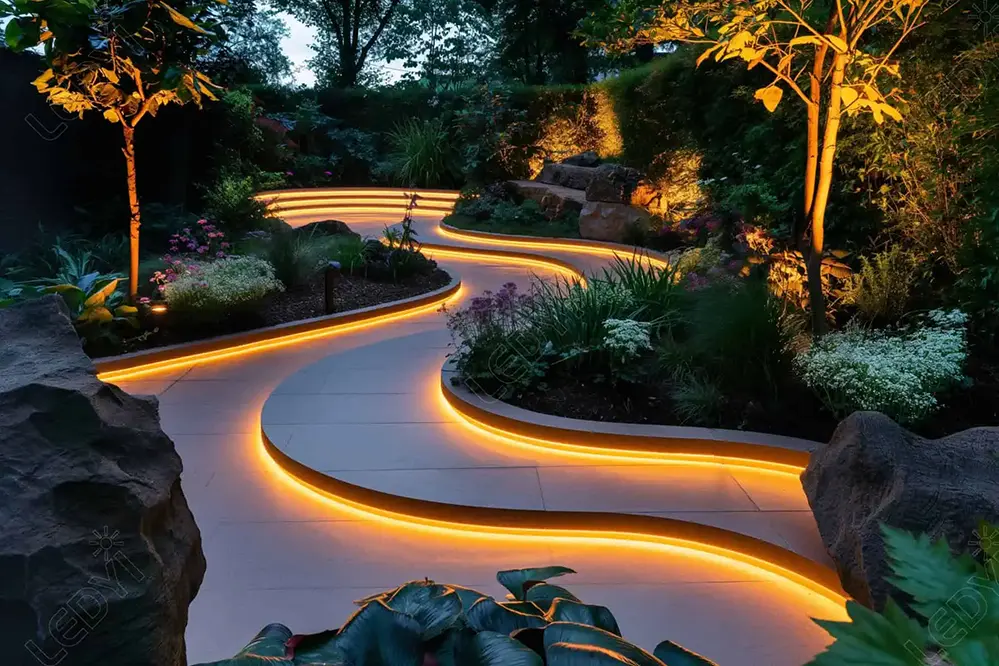
When selecting LED strip lights for outdoor use, prioritize variables such as durability, water-resistance ratings, and environmental compatibility.
To do this effectively, look for strips with Ingress Protection (IP) ratings of IP65 or higher to ensure they withstand moisture, dust, and varying weather conditions, thus safeguarding your outdoor lighting investment.
Brands like “waterproof” and “weatherproof” offer reassurance in terms of the ‘great outdoors’.
Weather Considerations
When considering LED strip lights for outdoor use, understanding weather conditions is vital. Weather patterns can change unexpectedly, presenting both challenges and opportunities for outdoor lighting systems.
Before installation, verify local weather forecasts to better prepare your LED systems. Planning for potential adverse conditions ensures the longevity of your lighting setup.
For example, arid desert climates may require different LED specifications than humid coastal regions. Recognizing these differences allows for tailored solutions (optimizing lifespan and functionality).
LED strips intended for outdoor use often come with robust weather-resistant features, safeguarding against unpredictable elements. These include UV protection coatings that prevent sun-related degradation.
Embracing technology advancements such as weather sensors can further enhance the resilience of your lighting systems, automatically adjusting settings to accommodate real-time environmental data.
Together, the key to success doesn’t end at choosing weather-resistant lights. Weather considerations should also drive proactive maintenance and strategic planning, ensuring your lighting remains brilliant and reliable through every season.
Proper Maintenance Tips
Routine inspections are crucial, ensuring your LED strip lights remain in optimal condition and continue to shine brightly.
First and foremost, it’s valuable to develop a comprehensive checklist that includes regular cleaning, ensuring the surface on which the lights are mounted is free from dirt and debris. This not only helps in maintaining the aesthetic appeal but also prevents unnecessary wear. Inspect the connections and solder points for any signs of corrosion, which can compromise the integrity of the lights.
Moreover, this is the time to perform a thorough inspection of the protective casings. If any damage is detected, replace the affected sections promptly to preserve the water-resistant capabilities of the lights and deter moisture from impacting performance.
Finally, invest in high-quality maintenance accessories, such as specialized cleaners and soft cloths, to gently clean your strip lights without causing damage. By dedicating time to regular upkeep, you’re ensuring that your LED installations remain vibrant and reliable, continuing to illuminate spaces with efficiency and grace, even amid the challenges presented by varying environmental conditions.
Conclusion
Implementing protective measures is vital for maintaining the optimal condition of LED strip lights when exposed to moisture. By selecting high-quality, water-resistant LED strip lights and equipping them with robust protective casings, you significantly reduce the risk of damage. Regular inspections further enhance their resilience, ensuring that these lights continue to perform efficiently even in challenging environments. This proactive approach not only safeguards your investment but also enhances the longevity and reliability of your lighting solutions.
With the right preparation, LED strip lights can confidently illuminate any space, overcoming occasional splashes and environmental challenges. By understanding the dynamics of moisture interaction and addressing them proactively, you ensure that your lighting remains a beacon of modern innovation and design excellence. This commitment to preventative strategies empowers your surroundings with consistent, brilliant light, laying the foundation for enduring functionality and aesthetic appeal.
